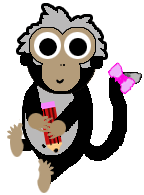"Surprisingly, however, a vegetarian diet is not necessarily the most efficient in terms of land use," said Peters.But I think what they are describing is essentially a more subsistent agriculture and would not be suitable for intensive, high-profit margin type agricultural production. Therefore, a lot of what is required for this system to succeed is to critically reduce meat consumption and also to develop a better local food system. This all depends on the crop rotation with hay that is the practice in the temperate countries. I am not very sure how this works in tropical areas but many small-scale farms, especially some organic farms, breed animals like chicken and vegetable to create a close loop of animal dungs for fertilizer and some veg for feed while having diet of both.
The reason is that fruits, vegetables and grains must be grown on high-quality cropland, he explained. Meat and dairy products from ruminant animals are supported by lower quality, but more widely available, land that can support pasture and hay. A large pool of such land is available in New York state because for sustainable use, most farmland requires a crop rotation with such perennial crops as pasture and hay.
Thus, although vegetarian diets in New York state may require less land per person, they use more high-valued land. "It appears that while meat increases land-use requirements, diets including modest amounts of meat can feed more people than some higher fat vegetarian diets," said Peters.
"The key to conserving land and other resources with our diets is to limit the amount of meat we eat and for farmers to rely more on grazing and forages to feed their livestock," said Jennifer Wilkins, senior extension associate in nutritional sciences who specializes in the connection between local food systems and health and co-authored the study with Gary Fick, Cornell professor of crop and soil sciences. "Consumers need to be aware that foods differ not only in their nutrient content but in the amount of resources required to produce, process, package and transport them."
Somebody should do a life cycle assessment comparison of various diets.

1 comment:
Interesting thoughts. Thinking about where the food comes from is a complicated question that I constantly tell myself that I'll think about when I have more time to think and research. That and other things like pesticide use, GMOs and other stuff in relation to both the environment and the human body. I can't believe I just typed think 3 times in that sentence. Anyway, would love to hear more from you about this as and when you find things out. Back to work now! Don't know how I'm going to survive October.
Post a Comment